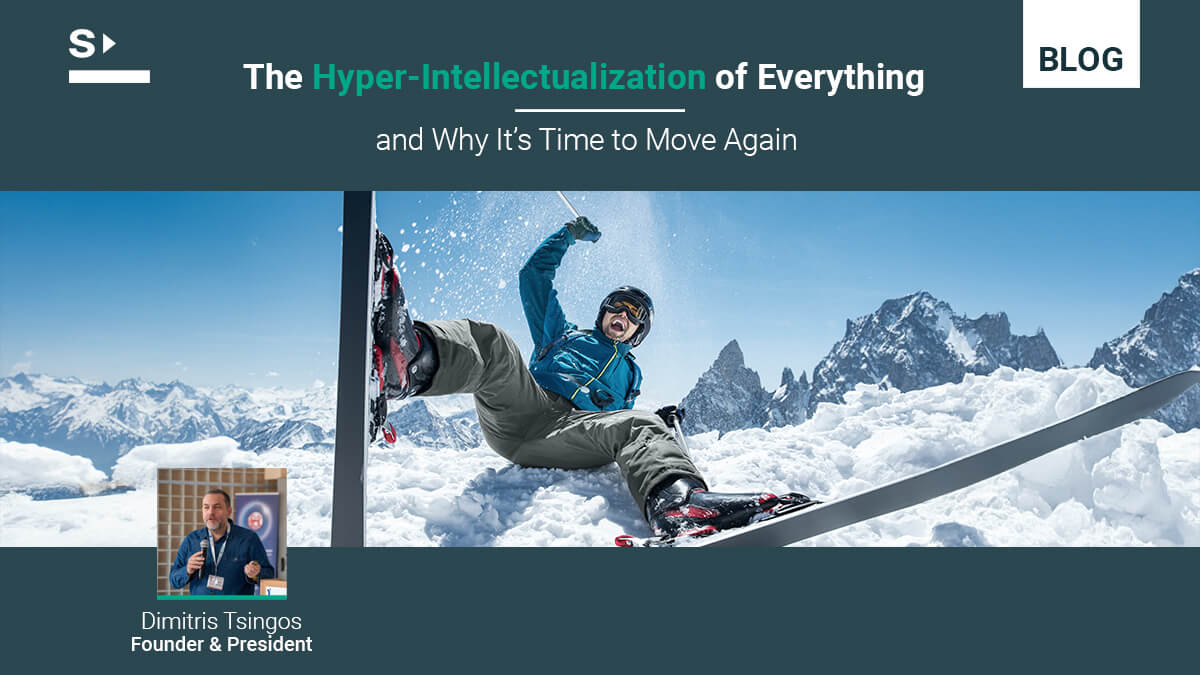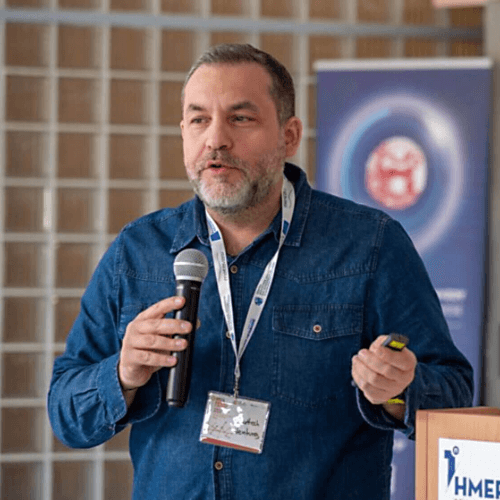The Hyper-Intellectualization of Everything — and Why It’s Time to Move Again

We live in an age that glorifies intellect.
We analyze, optimize, and overthink everything. We translate human experience into data, models, and abstractions. Somewhere along the way, we seemed to decide that the body’s role is simply to carry the brain — a logistical necessity rather than an integral part of our being.
This, I believe, is the true curse of our era: the hyper-intellectualization of everything.
Philosophy, science, and society have gradually elevated the mind to an almost divine status, often forgetting that the mind itself is not an entity apart from the body. Consciousness, thought, emotion — whatever word we use — are all bodily functions. They emerge from the complex harmony of tens of trillions of cells that make up what we call “us.”
To think of the mind as separate is to forget our biology. The spirit does not hover above matter; it is born from it.
And yet, we live in times when people seriously imagine “uploading” their minds into computers, as if that would somehow preserve their essence indefinitely. It’s an intriguing idea for science fiction — but scientifically and philosophically absurd. The mind cannot be detached from the body any more than light can be detached from its source.
The GenAI revolution has no way back. It will expand what our minds can offload to machines. That is precisely why we must be vigilant about where it leads us: into faster thinking, yes — but also into a deeper disconnection from the body that makes thinking possible in the first place.
Relearning aliveness
Earlier this year, I had the chance to rediscover this truth in the most tangible way.
During our company trip to Mount Parnassos, I decided to put on skis again for the first time in twenty-five years.
The last time I tried, back in my university days in Crete, the result was anything but graceful. I fell, I got hurt, and I left the slopes convinced that skiing was not for me. For a quarter of a century, that memory was enough to keep me away.
This time was different. My performance was still modest — perhaps even poor by most standards — but the joy was immense. As I moved across the snow, awkwardly at first and then with a growing rhythm, I felt something I hadn’t felt in years: fully alive.
All my senses were awake. My mind and body were no longer two separate entities but one integrated system in motion — a living harmony of perception, balance, fear, and exhilaration.
It reminded me that life is not an abstract concept to be thought about; it is a physical experience to be lived.
The forgotten dimension
Not everything meaningful happens in the head. There is equal meaning — perhaps greater — in movement, effort, falling, fatigue, repetition. These are not interruptions to intellectual life. They are life.
Somewhere between meetings, emails, and screens, we’ve lost the simple awareness that our bodies are not passengers; they are participants. They create the conditions for thought, creativity, and presence. Every idea we’ve ever had was born from a biological process — an act of metabolism and motion.
Many people today try to outsmart their bodies — or perhaps to appease them — through structured exercise routines, fitness apps, running programs, and activation challenges. These aren’t bad things; they help us stay healthy and disciplined. But they are not substitutes for real, purposeful physical activity — the kind that connects body and mind toward a meaningful, tangible outcome.
Working out is valuable, but doing something real — building, fixing, planting, carrying, creating — nourishes us in a different way. It gives the body a role beyond maintenance; it restores its purpose.
When we ignore the body, we not only lose health or vitality; we lose connection to the source of our creativity. We become abstract beings — intelligent, perhaps, but incomplete.
Embodiment in the age of GenAI
GenAI will make our intellectual work faster, broader, and, in some cases, better. But speed and scale are not the same as meaning. If machines extend the reach of our thinking, our task is to deepen the grounding of our living.
The antidote to hyper-intellectualization is not simply “more mindfulness” or “more workouts.” It is meaningful bodily action — ideally productive in the literal sense: activities that produce something tangible in the world. Build a bench. Repair a door. Plant a tree. Cook for a group. Carry boxes. Shape wood. Lay stones. These are not hobbies in the decorative sense; they are small acts of creation that engage the whole human being.
And yes, there is room for the other dimensions that restore balance: creative expression (craft, art, dance) and communal experiences (team projects, shared physical work). When these complement productive action, they amplify its effect. Together they remind us that we are not just thinkers who sometimes move; we are moving beings who think.
At Starttech Ventures, we talk about practical intelligence — building, experimenting, doing. The same principle applies to human experience itself. Thought alone is sterile. Action gives it life.
Time to move again
That day on Mount Parnassos reminded me that the balance between body and mind is not a luxury; it’s a necessity.
The body precedes the mind, because the mind itself is the body in action.
So yes — let’s think, imagine, and build. Let’s use GenAI boldly. But let’s also move, breathe, and sweat. Let’s fall, get up, and feel the joy of being fully alive. And let’s give our bodies useful work: not only to maintain them, but to use them in service of something concrete — productive, creative, and sometimes shared.
In the age of GenAI, embodiment may be our greatest competitive advantage — and our most human one.
Reflections from a recent #PracticalAI weekend in Speyside, Scotland.
